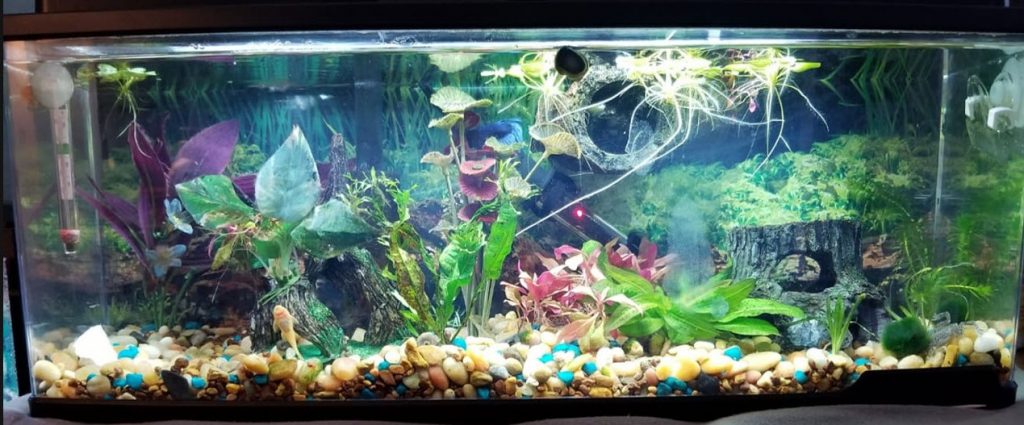
The food I used for my fish is a homemade high protein gel fish food. I find this to be the healthiest food there is as the protein level is very high, >55% by dry weight. The Mazuri gel food is also excellent.
Many hobbyists like to make their own food. So here is one recipe for doing that. Note that there are many ways to vary this and none are the “right” way.
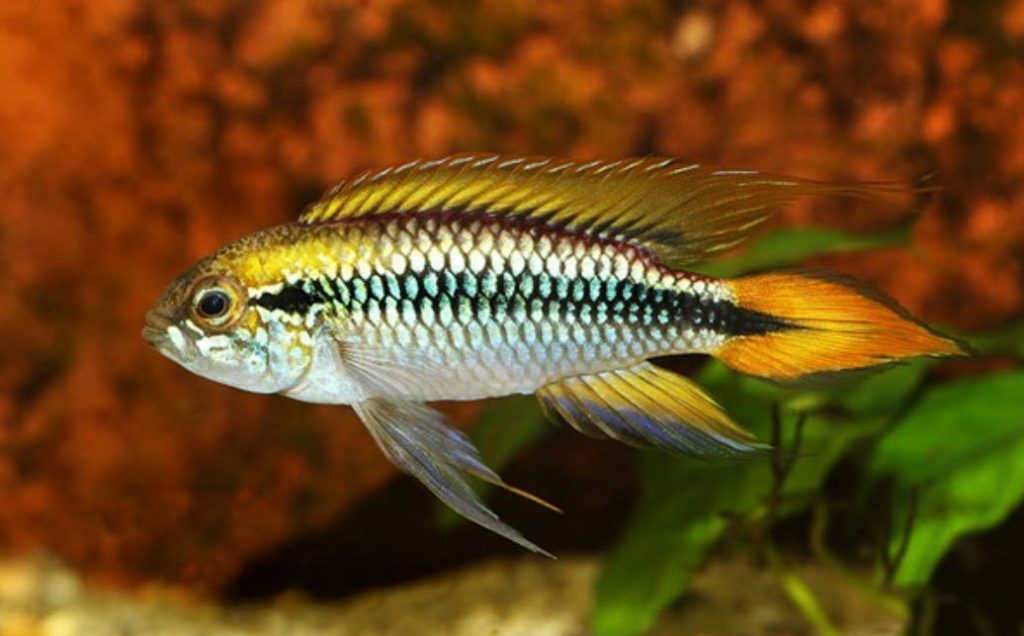
To make one variation of gel tropical fish food get the following ingredients:
- one pound (16 ounces cut up into ½ inch pieces) drained raw or cooked meat. Canned salmon is the best, especially for breeding fish. But any fish fillet, shrimp, chicken or lean beef is fine, as is beef heart, chicken livers or chicken hearts. Even canned tuna in water is just fine (Just drain the water). Some add fish meal or krill meal, both of which are excellent.
- One to two ounces of dry powdered algae (spirulina or chlorella, the green smoothie craze has made these easily available). Alternatives include peas, beans, summer squash, green beans and zucchini.
- One and one half ounces of plain gelatin (this is six envelopes of Knox gelatin). Note that, while gelatin is preferred (70% digestible protein), pectin or agar can be substituted for the gelatin.
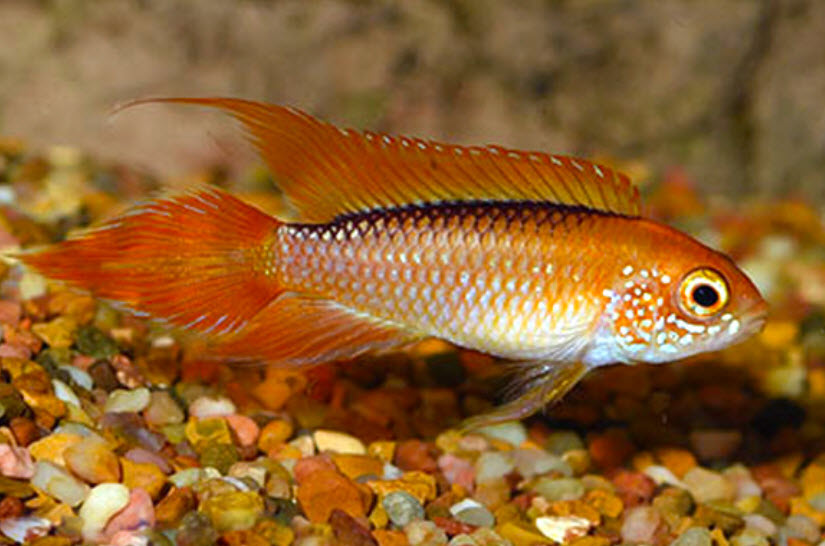
Heat the meat and algae to hot. Then heat one cup water to boiling. Add one and one half ounce of gelatin powder to the one cup of water. Stir the gelatin/boiling water mixture till the gelatin dissolves. Let both mixtures cool till they are safe to handle but still very hot. Then put both the hot gelatin/water and the hot algae/meat in a blender. Blend all this thoroughly to make a hot viscous green putty-like material. Adjust the water content to get this wet putty consistency.
This hot viscous putty should then be solidified as 3 mm (1/8 inch) thick slabs in zip lock bags in a freezer. It is important that the gel food be a thin slab. A thin slab is easy to break up and will rapidly defrost and break up in the water. Alternatively one can use candy molds to make cubes or whatever shape one desires. Or you can put it in baking pans or plastic tubs and just cut cubes out as you need them.
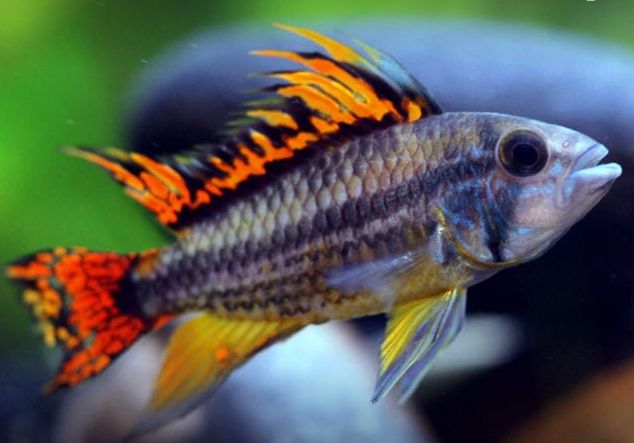
This well gelled cold material can be just used as is, just cutting off or breaking off and chopping up what is needed for each feeding. Chop up the gel into smaller pieces. Large hunks of gel can be monopolized by dominant fish, especially in growing fish. When feeding break up the food clump in the aquarium and let the food particles flow out over the whole aquarium, this is very important.
Note that this is a very flexible recipe. If one has some leftover vegetables like cooked zucchini, summer squash, green beans, etc. or shrimp or chicken, ad. infinitum. just toss it in. I do avoid kale, broccoli, cauliflower, and cabbage as they make the aquarium smell bad,
And avoid spinach. I made this recipe for many years using spinach instead of algae. Then Dr. Richmond Loh found oxalic acid (spinach is very rich in oxalic acid) crystals inside the organs of some fish that had died from bloat after eating a spinach based recipe. Given the wide availability of the powdered algae it just seemed wise to switch away from the spinach.
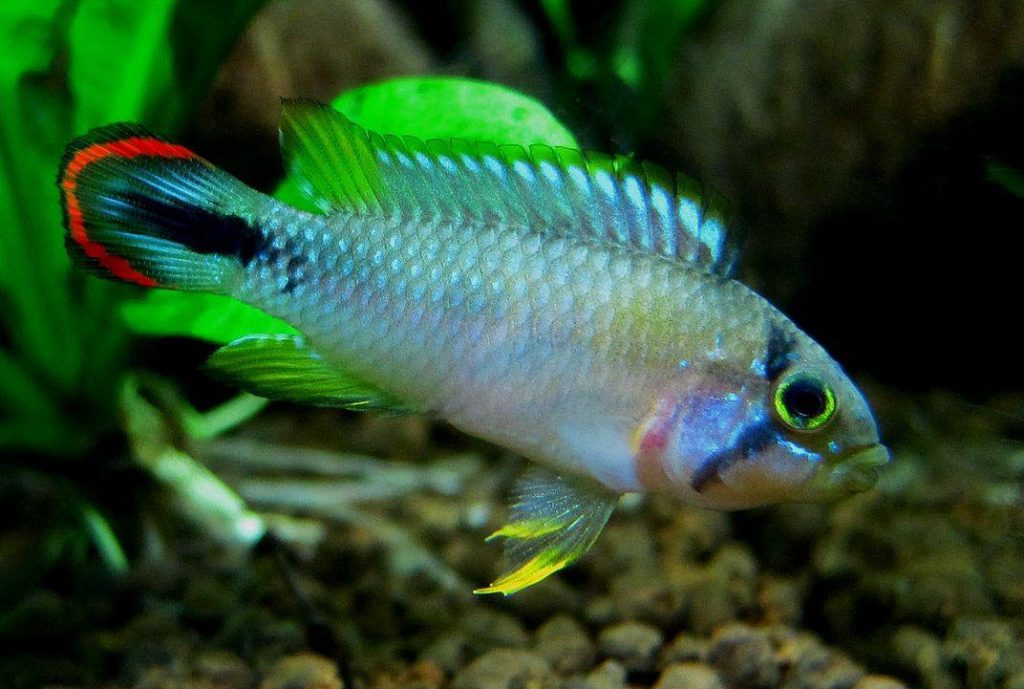
The amount of gelatin in this recipe is designed to give a firm gel that requires fish to “chomp” on the food to eat it. I find this tends to minimize food clouding up the water with small particles. But if you want a softer gel simply reduce the amount of gelatin in the next recipe you mix up.
This gel food sinks in the aquarium. If you want a gel food that floats simply add a heaping tablespoon or so of whipped cream or Reddiwhip to the final mix.
Juvenile fish need fat, calcium and phosphorus in order to have good growth. So if one is feeding juvenile fish, add one fourth teaspoon steamed bone meal (get from a garden store) and three tablespoons cod liver oil (from the internet or a health food store) to the blender before blending. Note this isn’t necessary with the canned salmon as it has bones and oil in it and is a super fish food for juveniles, especially after thorough blending on high speed.
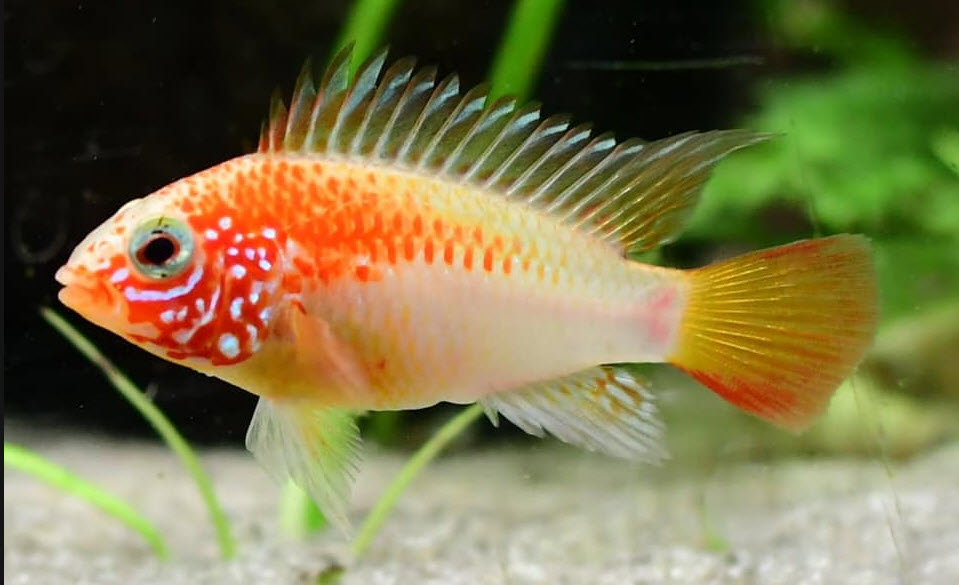
If you are breeding fish they need 10% to 15% fat BY DRY WEIGHT in their food. This can be supplied by any fat or oil. Salmon, chicken and beef heart are reasonably rich in fat.
It may be wise to add a small amount of powdered astaxanthin to this gel food. This is a harmless material that adds red pigment to any fish without affecting them. It is the red color in flamingos. If you have red or orange fish this may or may not be important. Add just ¼ teaspoon of astaxanthin to the blender (obtain from the internet or health food store). Note that one can add other “color enhancers” such as powdered spirulina, paprika and marigold powder if one desires. Also note that too much astaxanthin can produce very dark fish colors. Also note that some yellow fish turn orange with high astaxanthin.
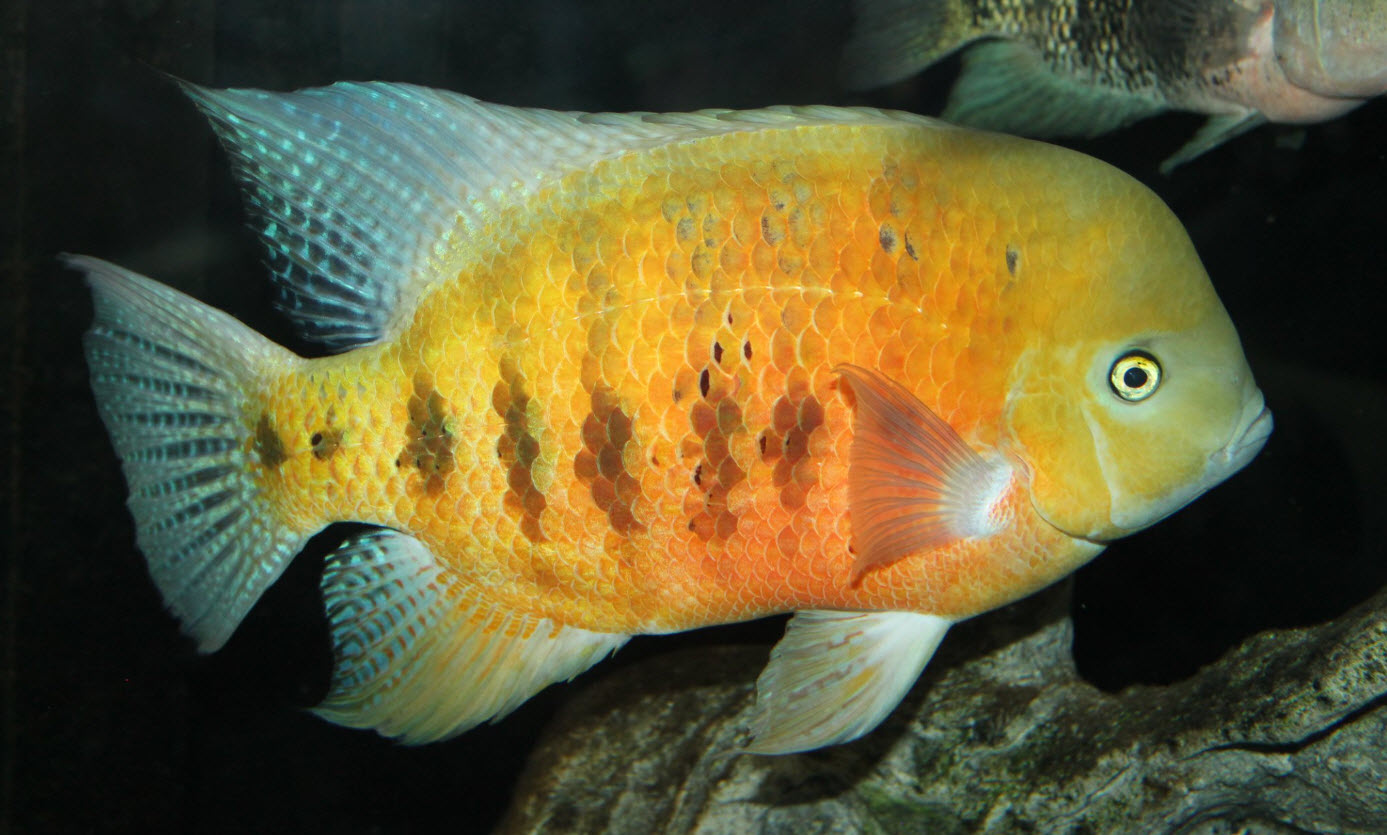
Note adding vitamins is not recommended. If the food has spinach or other green vegetable in it, it will have more than adequate vitamin content.
This gel food is very high in protein. By DRY WEIGHT it is 55% to 65% protein. The calculations for this are that canned salmon is 13 grams protein per 55 grams of canned salmon. Canned salmon is probably 60% water, 40% DRY fish meat. 40% of 55 is 22 grams. 13 divided by 22 is 59%. In other words, by DRY WEIGHT 59% of the can is protein. Surprisingly algae is almost as rich in protein by DRY WEIGHT. This high protein level is great for fish and for the ecology of the aquarium.
Also note garlic is NOT a good additive for fish food. The sulfurous compounds in garlic are there to make the garlic LESS palatable to animals. No aquaculture operation adds garlic to get the fish to eat more. So it just doesn’t work. It is the common practice of anthropomorphism, making animals human.
Here is an actual comment about this gel food:
“I have made the Gel Food following your recipe to the tee. Used Agar instead of Gelatin. It has become the most liked food for my fish, even for bottom feeding Plecos. Some even ignore live food and crazily devours this Gel. It’s just awesome.”
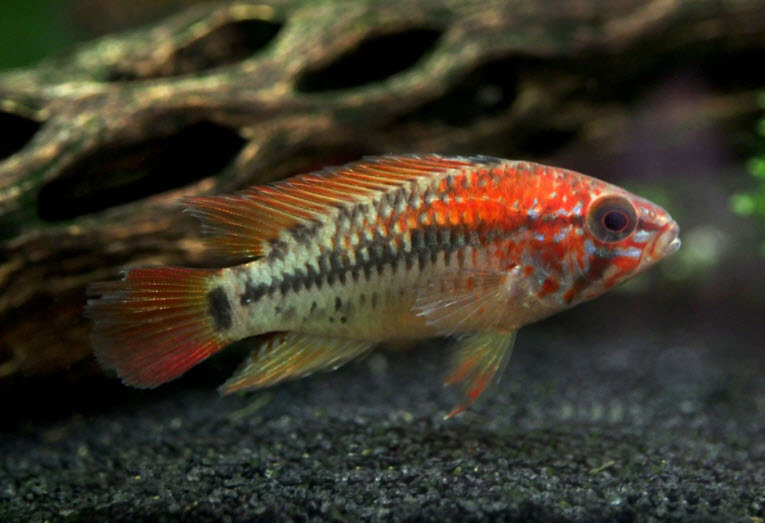
University of Florida Recipe
This is a recipe from the University of Florida (“A Comparison of Metronidazole Treatments for Hexamitiasis in Angelfish”, Whaley et. al. 1991) which closely parallels my recipe:
Recipe for Gelatinized Food
- 6 oz Can of Shrimp
- 2 oz Frozen Spinach
- 1 oz Grated Carrots
- 3 tbsp Baby Cereal (dry)
- 2.5 tbsp Brewer’s Yeast
- 2 oz Unflavored Gelatin
- 15 oz Water
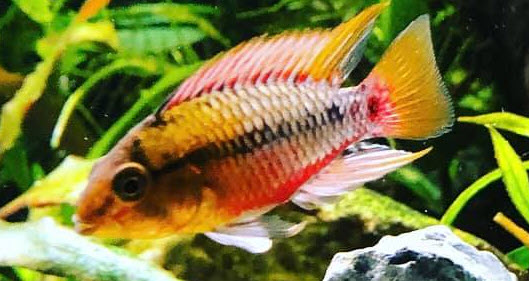
Procedure
- Blend 5 oz of water with shrimp, spinach, carrots and brewer’s yeast
- Boil remaining 10 oz of water.
- Add boiling water to gelatin in a bowl.
- Cool until gelatin mixture is hot but doesn’t burn.
- Add contents of blender to partially cooled gelatin mixture, mix thoroughly.
- Pour into flat pan and refrigerate.
- When mixture has gelatinized, cut into cubes for feeding and store in freezer.
I’m not a fan of using cereal in any fish food. And a root crop such as carrots does not reflect what fish should be eating. But this recipe will work well for any fish.
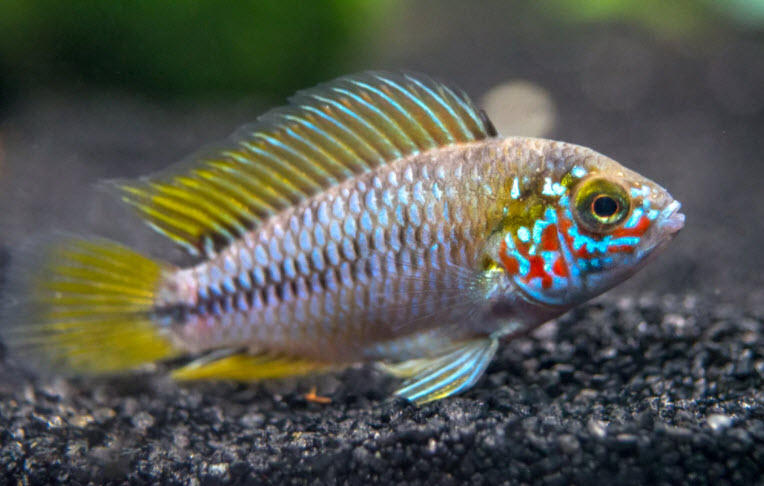
Mazuri Gel Food
A reader told me about a commercial gel food which is excellent. It is Purina’s “Mazuri® Aquatic Gel Diet for Carnivorous Fish”. It is VERY easy to make up without any blenders and the like and has a VERY good analysis.
- Crude protein not less than ….. 56.0%
- Crude fat not less than ………….15.0%
- Crude fiber not more than ……… 5.0%
- Moisture not more than ……….. 12.0%
- Ash not more than……………….. 15.0%
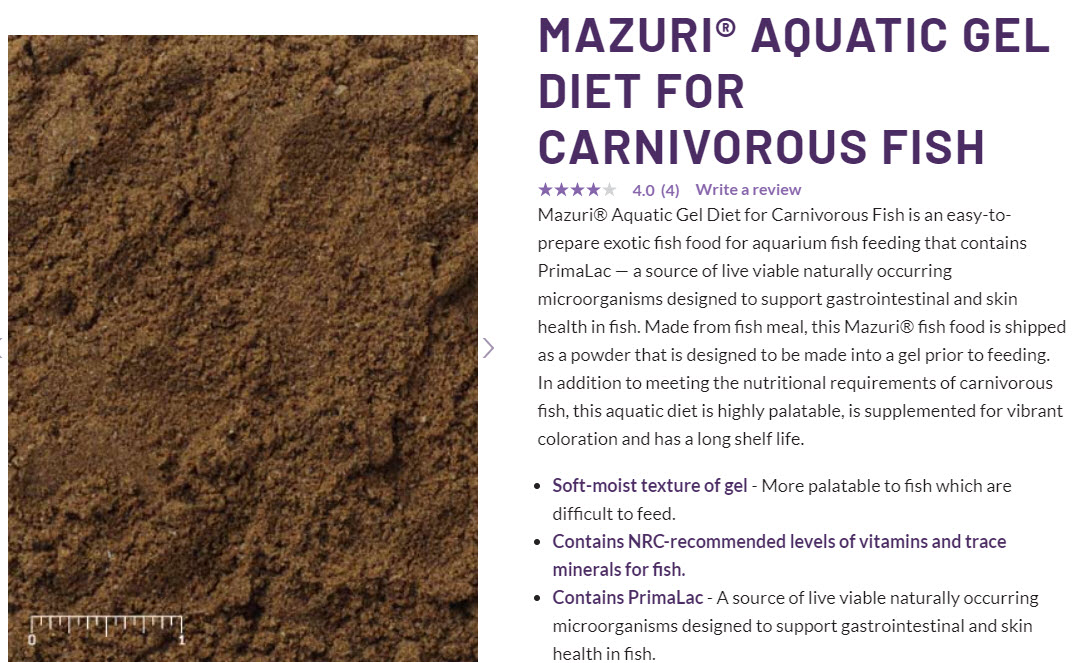
At $28.99 per kilogram the food is very reasonably priced. It is impressive! It will work well as a fish food for ANY fish. It is prepared by simply adding hot water and mixing. Put the mix into the refrigerator to gel it.
Note if one has a mixed tank one might feel more comfortable adding roughly one fourth powdered spirulina or chlorella to the Mazuri powder. These powders are now readily available at reasonable prices due to the green smoothie rage. This will bring down the fat level to about 12%, which is optimum for fish breeding. And it adds some veggies to the meat in this product.
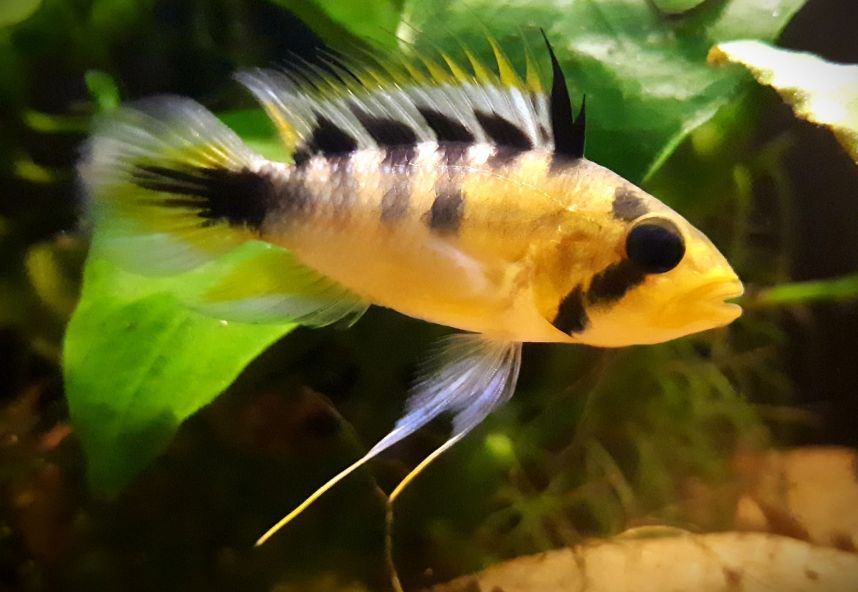
Repashy Gel Food
There is a commercial gel food called “Repashy”. This is an analysis for “Repashy Soilent Green”
- Crude Protein … 40% min
- Crude Fat ……… 8% min
- Crude Fiber ….…. 8% max
- Moisture………….. 8% max
- Ash ………………12% max
Considering this food costs an eye popping $150 per kilogram and the analysis is not great I really cannot recommend it.
The Easy Alternative
If you don’t want to go to this bother just chop up fish fillets or shrimp into small pieces of suitable size for the fish you are feeding. Add zucchini slices to the aquarium occasionally, impaled on a fork or tied to a rock. If you must have dry food sitting by the aquarium for convenience, use freeze dried brine shrimp, tubifex worms or krill for feeding.
.
Return to Fish Food Menu
.
Aquarium Science Website
The chapters shown below or on the right side in maroon lead to close to 400 articles on all aspects of keeping a freshwater aquarium. These articles have NO links to profit making sites and are thus unbiased in their recommendations, unlike all the for-profit sites you will find with Google. Bookmark and browse!
.

Dave says
In reply to Sienna …. Any filet of fish will do just fine.
Sienna says
I was just wondering in your recipe if any type of fish meat would be fine to add. My family often fishes for catfish and bass and there is usually a lot left over, is it possible to use that meat in this gel food?
Mary Sullivan says
I made this a couple of months ago and my fish love it! I wait until it is thawed and then squish it with my fingers under the filter stream and it breaks into various sizes so everyone gets some. It’s gone in no time. I saw my plecko scurrying around the bottom of the tank getting what landed the other day. Thank you!
Dave says
Heat the meat and the algae with just a little added water
Abhishek says
Hi Dave,
Thanks for this article and diy gel recipe. When you say heat the meat and algae to hot, does it mean heating them with water added?
Dave says
In reply to Alberto … Since gel food is 20% to 25% dry solids the “1% fish food rule” becomes the “4% to 5% fish food rule” OR the amount they can eat in one minute
Alberto says
Hello,
With gel food do we feed using the 1% fish weight rule or we simply let them eat for 1 minute?
Mik says
Thanks! Have a good one.
Dave says
In reply to Mik …… Great idea. Go for it.
Mik says
Good morning,
Thank you once again for the wealth of knowledge you offer. In regards to diy gel food, for the green portion I was wondering if I could use algae. Specifically, I grow green hair algae to fee daphnia, but sometimes it gets out of hand and I have large clumps of the stuff. I was getting ready to make my first batch of gel foods and wanted to toss it in with the canned salmon and some frozen peas.
What are your thoughts on that?
Thanks in advance and have a great day!
Dave says
In reply to Andrew Clark … All the repashy products cost an arm and a leg. Take a look at some of Dr Basslers food. The one I looked at had 55% protein and a reasonable price
Dave says
In reply to john ….. Salmon is salmon. Just get the cheapest you can find.
john says
Do you have any recommended brands of canned salmon? There’s so many options and price points. Do I need to worry about the salt content? How about wild caught vs not?
Andrew Clark says
Hi, I’m in the U.K, Many high quality commercial foods recommended in this an article are not available here. However, Repashy do have another gel product with higher protein, fat and fiber contents……Guaranteed Analysis: Crude Protein min. 45%, Crude Fat min. 10%, Crude Fiber max. 12%, Moisture max. 8%, Ash max. 11%. It’s called ‘Bottom Scratcher’. Would you be able to look at the ingredients and give some feedback? I’m looking for a mixed African cichlid staple food.
Thanks
Andrew Clark
Dave says
In reply to Phil I used the term refrigerator when I should have used the term freezer. All my gel food gets frozen.
Phil Bunch says
Do you freeze your homemade gel food for storage. You mentioned defrosting at one point but I did not see a specific instruction to freeze it. Thanks.
Dave says
IN reply to Noor …. a 1-2 grams to 30 grams is just fine. And go ahead a soak the Tilapia food.
Noor says
Dave, for the mazuri gel food you mentioned adding spirulina powder. Is there a spirulina to the mazuri powder ratio you recommend? Right now I’m just adding 1-2 grams of spirulina powder for every 30 grams of mazuri powder. Is that too much/too little?
Also, I got the dry food from Lakeway tilapia. The pellets are quite hard and sink pretty quick. Should I soak them in water before feeding, so that the smaller feed are able to eat it?
Thank you!
Dave says
In reply to Phil …. No idea why they would do that. I fed my fish 100% gel foods without any problems.
Phil says
I ordered some Mazuri gel food. The informational flyer that came with the canister says: “Intake of up to 50% of prepared Mazuri gel is recommended.” Why do you think they recommend no more than 50% of the fishes’ diet consist of Mazuri gel?
Dave says
In reply to Johann …. at 56% protein Dr. Basslers is a very good fish food, ignoring the marketing hype about being “probiotic”
Johan says
Hi, Have you compared Dr. Bassleer Bio fish food with other fish foods in the market? I’m curious as to your opinion on it.